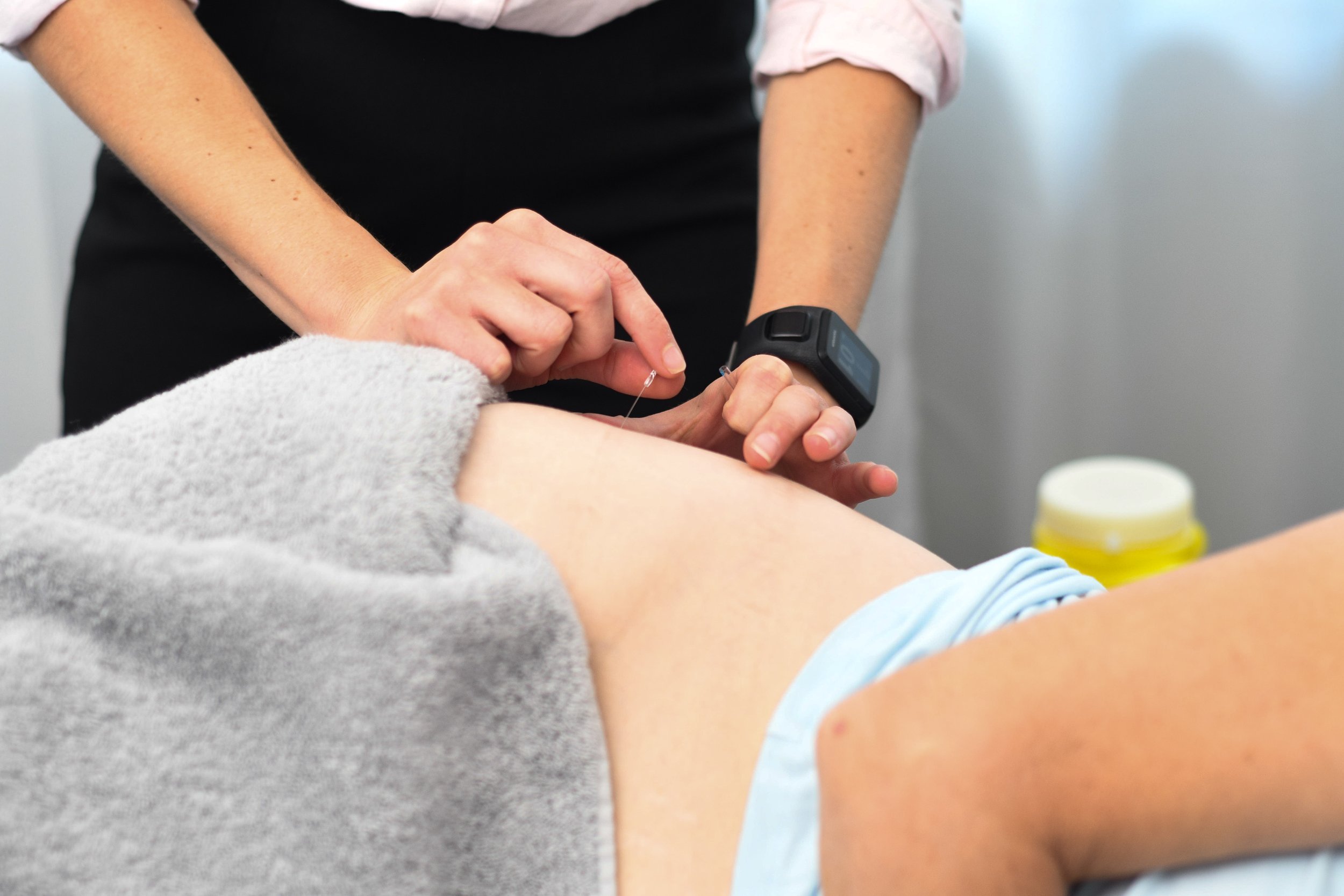Dry needling - what is it and how can it help?
We receive plenty of enquiries about Dry Needling (DNT) so we thought we would share some information about it. And firstly, yes, it is like acupuncture in terms of the needles used BUT the theory behind DNT is different to acupuncture.
What is Dry Needling Therapy (DNT)?
DNT is a technique used to treat muscle pain, tension, and dysfunction. The procedure involves inserting a thin needle into the skin and muscle to stimulate trigger points, or areas of muscle that are tight and tender. Tight muscles and tension can cause pain and discomfort (or if you’ve read our blog on chronic pain, pain and a ramped up nervous system can cause tight muscles and altered function), and dry needling aims to release these areas. Previously we spoke about aiming for a twitch response in a muscle, which would result in a reflexive relaxation of the muscle, which can reduce pain and improve function. Recent pain science theory also guides us to think that the DNT alters the sensory input going to your brain and may interrupt the pain cycle. We’re desensitising your nervous system to deescalate the protective postures and return to your normal “set point”.
DNT may be effective in treating various musculoskeletal conditions, including:
Neck pain and headaches: may relieve pain and tension in the neck muscles that can cause headaches and neck pain.
Shoulder pain: may be effective in treating conditions such as rotator cuff tendinopathy, impingement syndrome, and sometimes frozen shoulder.
Low back pain: may relieve pain and tension in the lower back muscles that can cause low back pain.
Knee pain: may be effective in treating conditions such as patellar tendinopathy, patellofemoral pain syndrome, and knee osteoarthritis.
Hip pain: may be used to treat conditions such as hip bursitis, hip osteoarthritis, and gluteal tendinopathy.
Plantar fasciitis: may be effective in treating plantar fasciitis by reducing pain and tension in the plantar fascia.
It is a low risk treatment technique that can provide numerous benefits. Some of these include:
Pain relief: may relieve pain and tension in the muscles, resulting in reduced pain and improved function.
Improved range of motion: may improve range of motion by releasing trigger points and improving muscle flexibility.
Faster recovery: may accelerate the healing process by improving blood flow to the affected area and reducing inflammation.
Reduced reliance on medication: may reduce the need for medication by providing pain relief and improving function.
We have quite a few of our practitioners here who are all trained in DNT, both osteos and physio. If you would like to see if DNT can help you, book here with Grace, James, Holly or Megan.
References:
Dommerholt J, Mayoral del Moral O, Gröbli C. Trigger point dry needling. Journal of Manual & Manipulative Therapy. 2006;14(4):E70-E87.
Cummings M, Baldry P. Regional myofascial pain: diagnosis and management. Best Practice & Research Clinical Rheumatology. 2007;21(2):367-387.
Kietrys DM, Palombaro KM, Azzaretto E, Hubler R, Schaller B, Schlussel JM, Tucker M. Effectiveness of dry needling for upper-quarter myofascial pain: a systematic review and meta-analysis. Journal of Orthopaedic & Sports Physical Therapy. 2013 Sep;43(9):620-34


